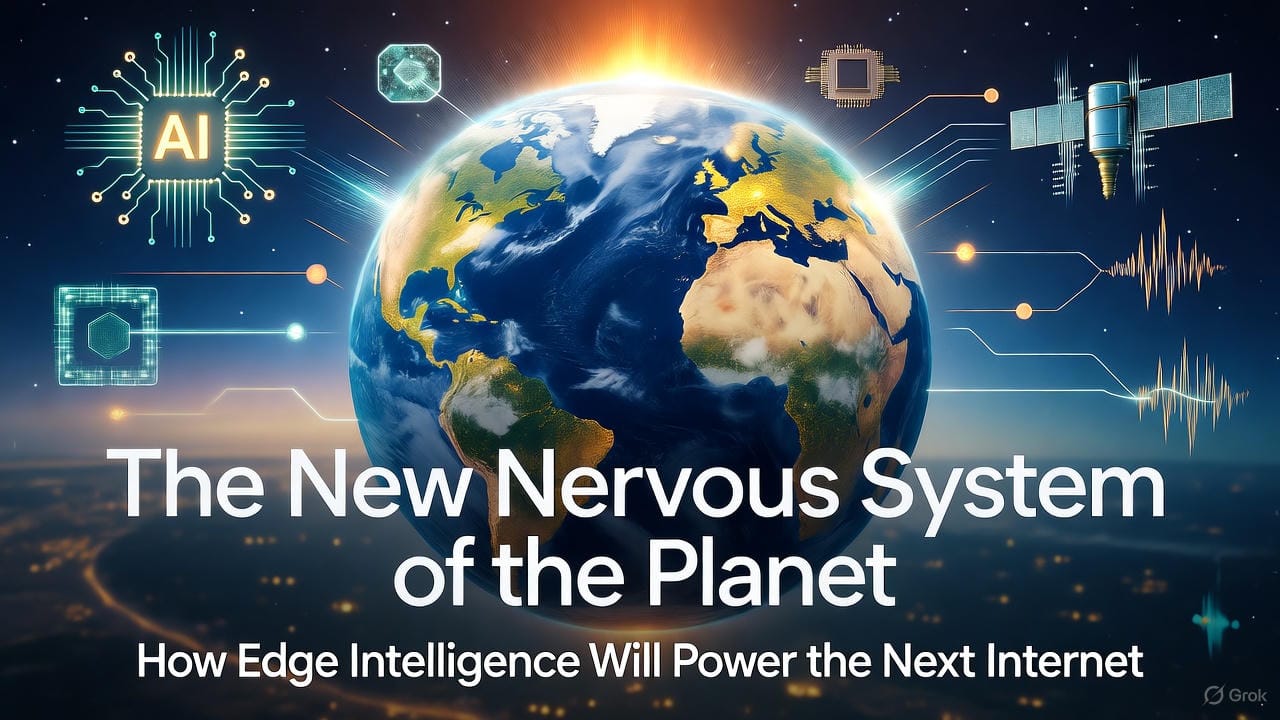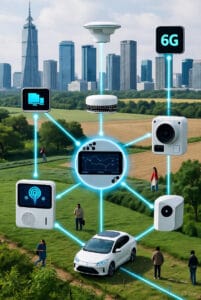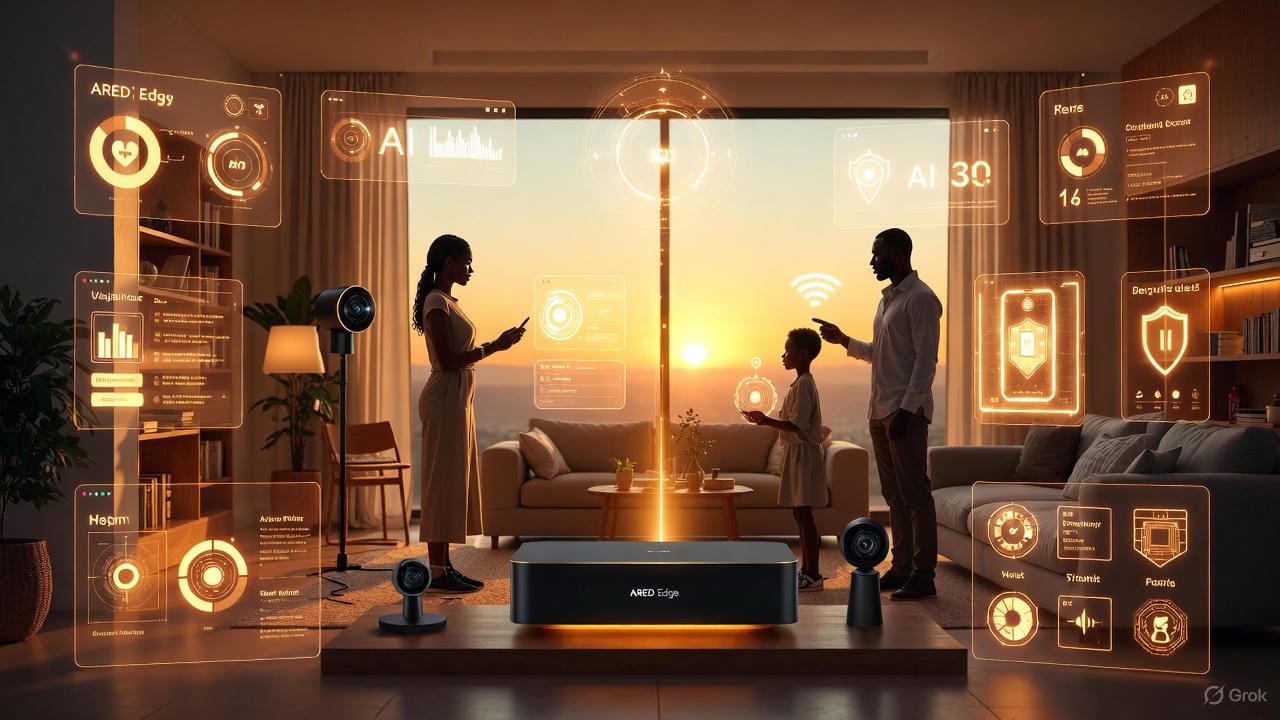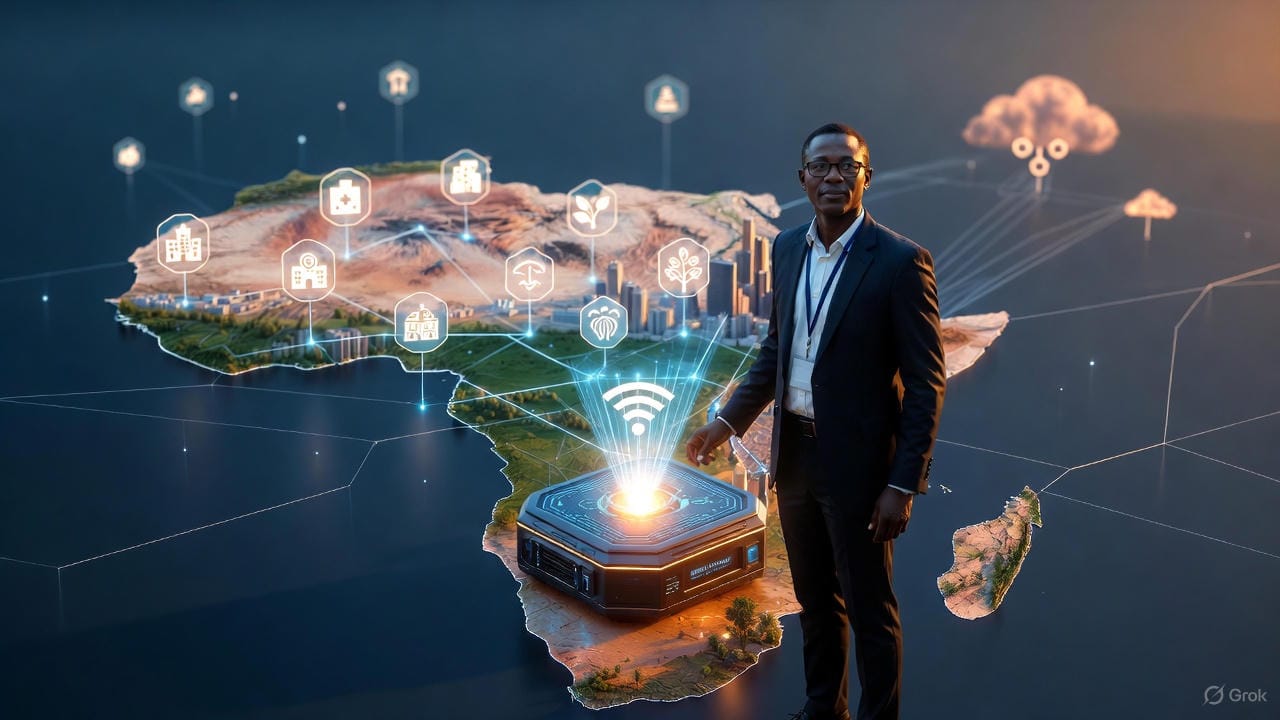
🌍 The New Nervous System of the Planet: How Edge Intelligence Will Power the Next Internet
For more than three decades, we’ve been obsessed with connecting things — cables across oceans, towers on hills, satellites in orbit.
Connectivity became the oxygen of modern life. But in our rush to connect, we forgot to ask a deeper question:
What if the network itself could think?
We’ve built the internet as a delivery system for data — a vast highway where information moves between devices and clouds.
Now, a new phase is emerging — one where networks are no longer passive infrastructure, but active intelligence.
This is the foundation of what the world is starting to call AI Super Networks — and the Edge is where they come alive.
From Connected to Conscious
The internet we know today is like a body with fast reflexes but no brain of its own.
Decisions are centralized: devices send data to faraway cloud servers, wait for instructions, and act.
That model worked when milliseconds didn’t matter. But as we step into a world of autonomous systems, precision healthcare, decentralized energy, and smart cities, delay is no longer acceptable.
The next generation of the internet must sense, decide, and act locally — almost like the human nervous system.
And that’s what an AI Super Network does.
It’s a distributed intelligence — a living digital fabric where every connected node, from a sensor on a solar grid to an autonomous vehicle, contributes to the network’s collective awareness.
The Edge becomes not just the endpoint — but the first responder.

The Rise of the Edge: From Endpoints to Ecosystems
At the Edge, computing power sits closer to where data is born.
It could be a small device in a rural clinic analyzing patient data, or a gateway in a remote village balancing renewable energy use when the cloud is unreachable.
Edge computing is rewriting the rules of infrastructure.
Instead of sending raw data thousands of kilometers away, we process it locally — reducing latency, protecting privacy, and dramatically cutting bandwidth costs.
But here’s what’s new:
In the coming years, Edge devices won’t just be processors — they’ll be collaborators.
Through 6G networks, each Edge node will be part of a mesh of intelligence, sharing insights, learning patterns, and improving continuously through federated AI.
Imagine millions of micro-data centers, each making local decisions but contributing to a global brain.
That’s not a dream. That’s the architecture the world’s largest tech ecosystems — from NVIDIA to Nokia to regional innovators — are now building.
6G: The Highway for Intelligent Data
Let’s talk about 6G.
Yes, it will be faster than 5G — but that’s not the point.
The real power of 6G is in how it connects computation and cognition.
6G networks will combine terrestrial towers, fiber, and satellites into a seamless layer of communication.
It’s designed not just for humans streaming video, but for machines communicating with machines at lightning speed.
Picture a world where drones coordinate disaster response without waiting for the cloud.
Where vehicles share road conditions with each other in milliseconds.
Where distributed energy grids rebalance power flow autonomously when a storm hits.
That’s 6G — a system that enables autonomous, context-aware decisions at scale.
Technically, it blends ultra-low latency (sub-millisecond), terabit-per-second throughput, and native AI at every layer of the stack.
But what matters is what it unlocks: a network that doesn’t just connect — it learns.
The AI Super Network: Brains Meet Bandwidth
If 6G is the highway, AI is the driver — and the Edge is the steering wheel.
An AI Super Network is the convergence of three forces:
AI intelligence – models that can learn, reason, and predict.
6G infrastructure – near-instant communication between devices.
Edge computing – local processing power where it’s needed most.
When these three merge, you get something entirely new: a network that can adapt dynamically to conditions, distribute workloads intelligently, and evolve through real-time learning.
In this ecosystem:
Every router, base station, and Edge gateway becomes part of the brain.
Every data packet carries not just information, but intent.
Security, optimization, and coordination happen automatically at the network layer.
The result is what some are calling the “cognitive internet” — infrastructure that senses and responds like a living organism.
Why the Edge Matters More Than Ever
For decades, innovation was defined by scale — bigger data centers, larger clouds, global centralization.
But the future will be defined by proximity — intelligence where it’s needed, not just where it’s stored.
That’s why companies building the next generation of infrastructure are turning toward the Edge.
It’s not a replacement for the cloud — it’s the completion of it.
In regions like Africa, where connectivity gaps remain, Edge systems unlock entirely new possibilities.
They can process transactions, optimize energy, or deliver digital services even when internet access is intermittent.
It’s inclusive technology — bringing intelligence to where the cloud can’t reach.
At ARED, we believe the Edge is not just a technical concept; it’s a social one.
It democratizes digital power — letting every village, school, and enterprise become a node of intelligence in a global system.
The Emotional Core: Humanity in the Loop
This isn’t just about machines talking to each other faster.
It’s about what happens when human progress no longer depends on central control.
When data processing happens locally, people regain sovereignty over their digital lives.
Farmers can predict yields without waiting for internet.
Clinics can run diagnostics instantly and privately.
Communities can share clean energy peer-to-peer, even off-grid.
AI at the Edge doesn’t replace human intelligence — it amplifies it.
It’s technology that listens first, acts faster, and serves closer to where life happens.
A Global Shift: From Big Tech to Distributed Intelligence
We’re witnessing a rebalancing of power in technology.
In the 2000s, data moved to the cloud.
In the 2020s, intelligence moved to AI.
In the 2030s, intelligence will move to the Edge.
Big Tech will no longer be the only brain of the internet.
The new digital economy will depend on millions of intelligent nodes — agile, resilient, secure, and decentralized.
This shift redefines the economics of connectivity:
Lower latency: Decisions happen in microseconds.
Lower cost: Less back-and-forth with cloud servers.
Higher reliability: Local processing keeps systems running during outages.
Higher security: Data never leaves its trusted boundary.
And because Edge devices can host small AI models, they’ll continuously learn from local data — creating federated ecosystems of intelligence that share insights without sharing raw information.
The Technical Backbone: Trusted Execution and Secure OTA
For this to work at scale, trust is everything.
Each Edge device must be verifiably secure, updateable, and tamper-proof.
Technologies like OP-TEE (Trusted Execution Environment) ensure that even at the hardware level, sensitive data and AI models run in protected zones.
Secure OTA systems keep the entire fleet updated with signed images — ensuring no malicious code ever enters the network.
Together, these create the backbone of digital trust.
It’s what allows an AI Super Network to grow confidently — one secure Edge at a time.
Why This Matters Now
NVIDIA’s billion-dollar investment in Nokia to co-develop AI-driven 6G systems signals more than a partnership.
It’s a clear message: the center of gravity in technology is shifting.
The infrastructure of the next decade will be built around intelligence, not just connectivity.
The companies, nations, and innovators that embrace Edge computing today are building the foundation of that world — one where data is not just transmitted, but understood in motion.
The Future: Intelligence as Infrastructure
In a few years, we’ll stop talking about the “internet” as a network of machines.
We’ll talk about it the way we talk about ecosystems — dynamic, adaptive, alive.
Edge-powered AI networks will manage themselves, heal themselves, and learn continuously.
Cities will become smarter, industries more sustainable, and connectivity truly universal.
And when people ask where the next wave of digital transformation began, we’ll point not to the cloud — but to the countless Edge devices quietly turning connectivity into cognition.
Because the future of the internet isn’t somewhere “out there.”
It’s here — on the ground, at the Edge, where intelligence meets humanity.


